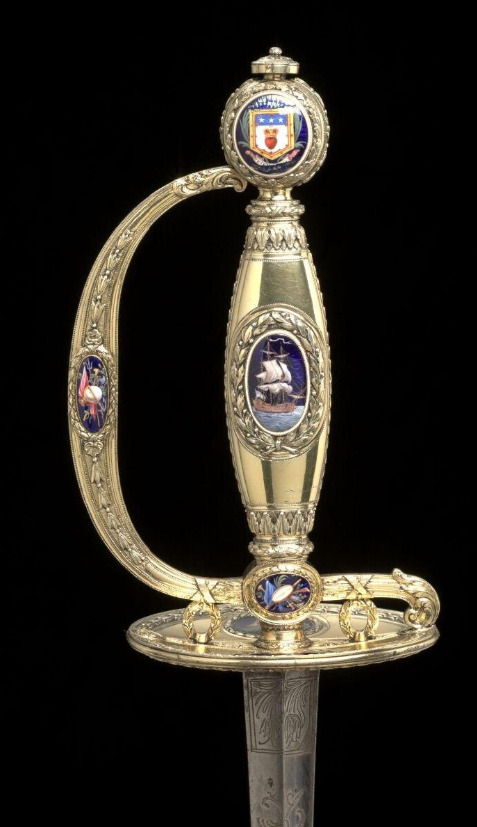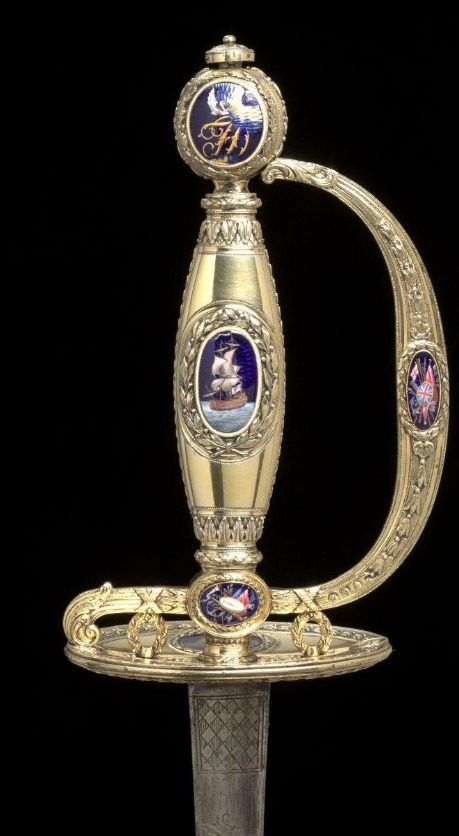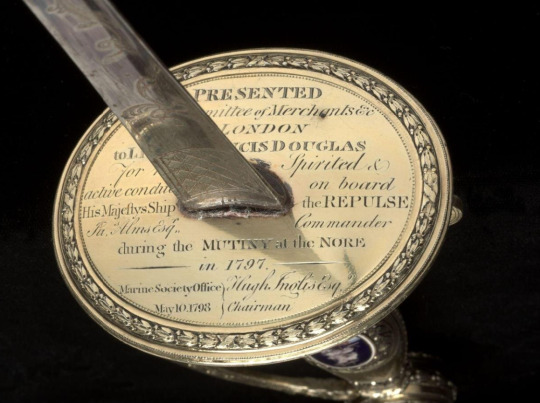#thames estuary
Text

Southend-on-Sea, Essex; 2.7.2011
#photography#photographers on tumblr#dubmill#Southend#Southend-on-Sea#Westcliff#Essex#England#UK#Britain#concrete#Thames Estuary#original photography#original photograph#2011#02072011
73 notes
·
View notes
Text
Raids Over London - Raids Over Cologne - Nazi Infiltration - Stepped Up War Production - March 20, 1941
Raids over London: Spring was a little late that year.
https://pastdaily.com/wp-content/uploads/2013/03/news-for-march-20-1941.mp3
News for this day in 1941 (the 565th day of the War in Europe) had to do with the devastating overnight raids in London, reported to be the worst in a year, since the Blitz in 1940. The target for the previous evening was the Financial District with heavy damage and…

View On WordPress
#1940&039;s#Blitz#British Army#Broadcast Journalism#Broadcasts#Capitol Hill#Cologne#Day in history#Foreign Policy#Franklin D. Roosevelt#German#Germany#news reports#Newscast#Past Daily#Richard C. Hottelet#Thames Estuary#Wendell Willkie
2 notes
·
View notes
Text

Walk into the sunset with the characters in Rotting Trees! Just kidding, they're having a terrible time and would resent your toxic positivity.
Join the weekly readalong here my Patreon and trial for 7 days!
1 note
·
View note
Text
A war is an ecological disaster as much as it is any of the other kinds. When it is over, when they win, when the Republic becomes the Empire and begins to inflict its peace across the galaxy -
There's an army of men, bought and paid for, that it doesn't need. Can't demobilise or repatriate. Battle droids you can wipe and recycle. Men? Not so much. Especially the ones that are injured too badly to make it as stormtroopers and not badly enough to not be a threat if they chose to organise themselves against the Empire.
In the years of their fighting they have left a considerable mess behind them, across Christophis, Felucia, Geonosis. Convenient, then, fitting, that they're the ones who get to clean it up, ammunition dumps and burnt-out hulks and UXO and the accretions disks of dead capital ships with the frozen corpses of their dead brothers amidst the rest. Exploded buildings and rubble and twisted beams and jagged skyscrapers like broken teeth. Shipbreakers and smelters.
The Empire skimps on their protective gear. Alternatively it is fiscally responsible by mandating contracts are awarded to the lower bidder. Whatever the reason, the clones die to UXO, to vacuum, to dormant commando droids. Not many people care; at least they're being useful. Might has well get all the use out of them while they can.
Some deaths take longer; fine dust to scar up their lungs, or improperly stored tibanna rotting through the tanks to pollute the soil. Felucia's microbes slowly wending their up the spinal cord to erupt in the brain years later.
So they're broken up into smaller groups. Ground down by attrition and exhaustion. Some desert. Some find a place among established scavenger crews. Many die, and their deaths are logged in Imperial spreadsheets by Imperial bureaucrats who go home to their loving families and think nothing of it.
#inspired by finding out there are WWII ships with UXO rotting away in the Thames estuary#and burn pits and the dust of DU and trenches dug in into the soil of Chernobyl#and the Empire needing to do something with demobbed clones#no home to send them to but don't want them to organise#or anyone to organise behind them#use them up and throw them away#post clone wars#what happened to the clones#only the dead know the end of the war#headcanon#meta
59 notes
·
View notes
Text










The Parable of the Children’s Home (26-28.6.24)
Photos: Old Leigh, Old Sea (Thames Estuary) (16.4.17)
#perceptualism#christian poetry#new poets corner#poetry#jesusfreak#faith in jesus#jesus#sea#north sea#thames river#river thames#estuary#fishing boats#boats#black and white photography
0 notes
Video
Thames Barge & Whitstable Town in Backgound Kent by Adam Swaine
Via Flickr:
Whitstable is a town in the Canterbury district, on the north coast of Kent adjoining the convergence of the Swale Estuary and the Greater Thames Estuary in southeastern England, five miles north of Canterbury and two miles west of Herne Bay.
#barges#thames barges#swale district#estuary#estuaries#swale estuary#boats#walks#waterside#water#waterways#Coastal#coast#coastal path#kent coast#england#english#britain#british#uk#uk counties#counties#wild#summer#seasons#footpath#paths#rural#rural Kent#Kent
0 notes
Text

#pretty pictures#red#thames#fort#events#estuary#event#timeline#sands#tle#forts#timelineevents#jetstreamtourscom#uk#light#england#sunrise#landscape#low#ww2#defences#antiaircraft#antiaircraftdefences#jetstreamtours#wpd23objects
0 notes
Text

London, United Kingdom: London is the capital and largest city of both England and the United Kingdom, with a population of around 8.8 million, and its metropolitan area is the largest in Western Europe. It stands on the River Thames in south-east England at the head of a 50-mile estuary down to the North Sea and has been a major settlement for nearly two millennia. The City of London, its ancient core and financial centre, was founded by the Romans as Londinium and retains its medieval boundaries. Wikipedia
189 notes
·
View notes
Text

wikipedia - The Maunsell Forts are towers built in the Thames and Mersey estuaries during the Second World War to help defend the United Kingdom. They were operated as army and navy forts, and named for their designer, Guy Maunsell.The forts were decommissioned during the late 1950s and later used for other activities including pirate radio broadcasting. One of the forts is managed by the unrecognised Principality of Sealand; boats visit the remaining forts occasionally, and a consortium named Project Redsands is planning to conserve the fort situated at Red Sands. The aesthetic attraction of the Maunsell forts has been considered to be associated with the aesthetics of decay, transience and nostalgia.
99 notes
·
View notes
Text




Sword 1798-99
Small swords were items of male jewellery. By the 1750s, their elaborate gold and silver hilts, mounted with precious stones and fine enamelling, were the products of the goldsmith and jeweller rather than the swordsmith. They made fitting rewards for distinguished military and naval service. With their blades tucked away inside scabbards, it was their ostentatious and expensive hilts that carried their thrust.
This sword is inscribed: ‘PRESENTED by the Committee of Merchants &c OF LONDON to LIEUT.T FRANCIS DOUGLAS for his Spirited and active conduct on board His Majesty’s Ship the REPULSE. Ja.s Alms Esq.r Commander during the MUTINY at the NORE in 1797. Marine Society Office, May 1o 1798 } Hugh Inglis Esq.r Chairman’
Francis Douglas was rewarded for his role in suppressing a violent mutiny among sailors at the Nore, a Royal Navy anchorage in the Thames Estuary in 1797. According to an account by an eyewitness, published in The Sheerness Guardian 70 years later, the ship, Repulse, made a 'miraculous' escape from the mutineers reaching shore despite receiving 'as was calculated two hundred shot'.
#naval artifacts#naval weapons#small sword#lieutenant francis douglas#mutiny at the nore#1797#age of sail
235 notes
·
View notes
Text
[The British imperial imaginary conceives] of Bermuda as a tiny paradise in the North Atlantic. But long before cruise ships moored up, prison ships carried hundreds of convicts to the island, first docking in 1824 and remaining there for decades. [...] [T]he use of Bermuda as a prison destination is less well known. For 40 years, British prisoners worked backbreaking days labouring in Bermuda’s dockyards and died in their thousands. [...]
[T]he notorious floating prisons known as hulks. [...] [I]n addition to locations across the Thames Estuary, Portsmouth and Plymouth, the British government used these ships as emergency detention centres in colonial outposts across the 19th century, detaining convicts in Bermuda between 1824 and 1863 and Gibraltar between 1842 and 1875. England has a long history of banishing its criminal population. In the 18th century, criminals were typically sentenced to seven years overseas in America. Many worked as plantation labourers in Maryland and Virginia [...]. Britain [...] turned to hulks to cope with rising [prison housing] numbers. Each could hold between 300 and 500 men, and they were nicknamed “floating hells” for their unsanitary and dangerous conditions.
---
[T]he government felt that convict labour could be put to use in other colonies [in addition to Australia], and so began an experiment in 1824 to send men to Bermuda. [...] Though only 20 miles long, the island was already extremely important to naval strategy. It was used as a refuelling station for British ships travelling to colonial outposts such as Halifax, Nova Scotia and the Caribbean. But the naval dockyard needed modernisation, and rather than employ local workers, convicts - a cheap and easily mobilised workforce - filled the labour gap. [...]
[M]en lived on board the ships they had sailed on (seven in total). [...] Many were injured in the dockyards, others went blind from the reflected glare of the sun as they quarried white limestone. [...] They were burnt by scorching temperatures and suffered sunstroke [...]. Bermuda also received people convicted in other British colonies, including Canada and the Caribbean. During the years of the great famine in Ireland (1845 to 1852), thousands of Irish convicts arrived on the island, many suffering from malnourishment. [...] The experiment ended after 40 years, in 1863, when dockyard repairs were completed. The remaining hulks were scuttled or broken up for scrap, and convicts were transported to Australia and Tasmania, or home to England [...].
---
Bermuda’s history as a prison island has been largely forgotten, but this story shares parallels with today. Prisons are suffering from overcrowding, and governments still detain prisoners and others on islands and modified ships. In Dorset, the Bibby Stockholm ship is housing asylum seekers [...].
The convicts who lived, worked and died in Bermuda are part of a larger global story of coercion and empire.
The product of their labour was imperial strength, but for those sent thousands of miles from home and buried in unmarked graves, the brutalities of their experience should also be remembered.
---
All text above by: Anna McKay. "Britain's forgotten prison island: remembering the thousands of convicts who died working in Bermuda's dockyards". The Conversation. 27 March 2024. [Bold emphasis and some paragraph breaks/contractions added by me. Presented here for commentary, teaching, criticism purposes.]
#abolition#ecology#landscape#colonial#imperial#multispecies#tidalectics#caribbean#archipelagic thinking#indigenous#carceral geography#ecologies
66 notes
·
View notes
Text

1940 09 15 Hurricanes Into Battle - Mark Postlethwaite
Hawker Hurricanes of 249 Squadron carry out a head-on attack against a large formation of Dornier 17 bombers of KG3 as the Battle of Britain reaches its critical phase in mid-September 1940.This painting is roughly based upon the events of 15th September when 249 Squadron intercepted some of the large formations of Dorniers over the Thames Estuary. V7313 GN-F was a favourite aircraft of legendary Battle of Britain ace Tom Neil who shot down two on the day.
20 notes
·
View notes
Text
The Sign of Four: A Break in the Chain
It's a rather long walk from Baker Street to Camberwell.
Poplar specifically refers to the area of the East End just north of the Isle of Dogs, but also was the name of the entire district covering Bow and Bromley-by-Bow down through the whole Isle of Dogs area.
The Victorians had asthma inhalers around, although not like the ones we have today. They even had asthma cigarettes and cigars!
Baring-Gould's chronology has Holmes being an actor of some note before he became a consulting detective.
The Westminster Stairs were located just south of Westminster Bridge. Today it is the sight of the Speaker's Garden of the Palace of Westminster, and no access is possible to the river there. However, Westminster Millennium Pier, opened in 2000 to replace the old pier, has various passenger and tour services operate from there.
Oysters were very common and cheap at the time; being sourced from beds in the Thames Estuary; the river through London had become too fast-flowing due to the construction of the Embankment. You could pick them up from street sellers called costermongers (a subject worth its own post at some point!) along with various other locally sourced fish.
Overfishing and pollution vastly reduced their numbers; microplastics are an issue today. However, efforts are being made to restore the oyster beds and have a sustainable industry supplying London again.
Grouse are hunted in England between 12 August and 10 December. They are either driven in large numbers over a bunch of people with shotguns or flushed out by them as they walk.
You can get oven ready grous for about £10 today.
27 notes
·
View notes
Text



Adventuresses We Love – Amy Johnson
Adventuress Amy Johnson started taking flying lessons at the London Aeroplane Club in 1928. Typical chauvinistic attitudes of the day meant she had to spend twice as much time in training as her male colleagues, but she did finally earn her pilot’s license in 1929. Later that year, she became the first British woman to qualify as an aircraft ground engineer. She then set her eyes on another goal – Australia.
On May 5, 1930, with only 75 hours flying time under her belt, Johnson took off from Croydon in her deHavilland Gipsy Moth she’d named Jason. The flight would not be an easy one. Along the way, she’d battle sandstorms, monsoons, and blistering heat. As she sheltered from a sandstorm, packs of wild dogs got a little too close for comfort. Low on fuel, she made an emergency landing on a military parade ground in Pakistan, scattering the soldiers assembled there in the process. Finally, on May 24, she landed in Darwin, Northern Territory, becoming the first woman to fly solo from England to Australia. For this feat, she was awarded the Harmon Trophy, and a CBE by King George V.
This was the first of several long-distance record flights for Johnson. In 1932 she flew from London to Cape Town, South Africa, beating the previous record (set by her husband,) by 11 hours.
During World War II Johnson flew for the Air Transport Auxiliary, ferrying aircraft around England. On January 5, 1941, Adventuress Amy Johnson disappeared when the plane she was ferrying crashed into the Thames estuary. She was 37 years old; her body was never recovered.
Jason is on permanent display at the Science Museum of London. Photo of Jason courtesy of the Science Museum of London, shared under the creative commons license.
26 notes
·
View notes
Note
Not sure if you would know, but thought it worth a try. What type of accent did Charlie have? I know in England accents seem to have more meaning than in America, in terms of class and not just being a signal of where you’re from. I’ve read that Mick changes his to seem like he’s not as posh and I’ve also read that people respect Charlie never changed his. But what is it? Just cockney? I don’t know, but I like it. Especially on words like water and daughter, like when he was talking about the IORR video and said he doesn’t like “me head under water”.
Accents in the UK, and especially England, are a huge cultural and class marker in a way they just really aren’t in the US. Like there is a general bias you’ll see in America of, for example, perceiving people with southern accents as less educated or intelligent vis a vis a more standard northeastern ones, but they don’t have as much regional and class variance and significance. There’s a really good NYT’s article on the subject from the early ‘90s that does a deep dive on it. One of the important things to keep in mind is that even the English accents which outsiders might be familiar with, like RP (Received Pronunciation) come in variations, between the very standard and crisp BBC newsreader of the ‘40s-90s type and the aristocratic variant that has a bunch of peculiarities in pronunciation and vocabulary (think King Charles and the tendency to pronounce a word like “power” as “pāh”). I lived in London for almost 4 years to do my undergrad degree and go back frequently, and of all the places I’ve been in the world it’s still far and away the one where people are the most likely to openly comment on your accent. I was lucky in that the comments were mostly positive, but it’s still a jarring experience when you first start living there.
Mick’s accent is 100% a put on. I hate to cite Bill as a credible source, but he has a point when he says that Mick’s accent is a fake, which is something people who have worked for him have also said. It’s a really exaggerated Cockney accent, which doesn’t match being from a pretty far London suburb (Dartford) or having grown up middle class. Considering his age and background he probably had elocution lessons as a kid to learn to speak RP, especially because people who are around him in private have said he speaks “The Queen’s English.” It’s an act to look like an ‘authentic’ rock star, which there is often associated with coming from a lower class, tough background. When in reality he went to university and is the child of a homemaker and a PE teacher. I think Keith’s accent is authentic, it’s just a very non-standard jumble of Cockney, RP, and American mid-Atlantic, because he’s lived in the US longer than he has in the UK at this point.
My (tentative) classification for Charlie would be Estuary English. It’s a cross between RP and Cockney that’s associated with the Thames and its estuary/the wide London region and surrounding suburbs and towns. Charlie definitely leaned heavier to the Cockney side, especially earlier in his life, but there’s a really interesting combination of the two dialects in his way of speaking. Like that quote you pointed out, he was never consistent in making the “my - me” switchover, where the “me” as possessive article is hugely characteristic of Cockney English. It’s the same thing with his “h”s, sometimes he dropped them and sometimes he didn’t (although RP can do that sometimes too, but not as often). He also tended to use more outmoded vocabulary from Cockney slang, with words like “bloke”, which was probably a reflection of the fact that he never really lived in London (other than keeping a flat in Kensington, which is a bastion of RP) after the mid-1960s and was holding onto the variety from his childhood and young adult years.
24 notes
·
View notes
Text





I.D. (2-5.9.23)
Photos: taken from the end of the world’s longest pier in Southend-on-Sea, UK on August Bank Holiday 28.8.23 (1.3 miles). Twas a beautiful day!
#perceptualism#seaside#sea#southend#essex county#river thames#thames river#estuary#north sea#jesus christ#belief in jesus#christianity#new poets corner#christian poetry#poetry#jesusfreak#jesus
1 note
·
View note
